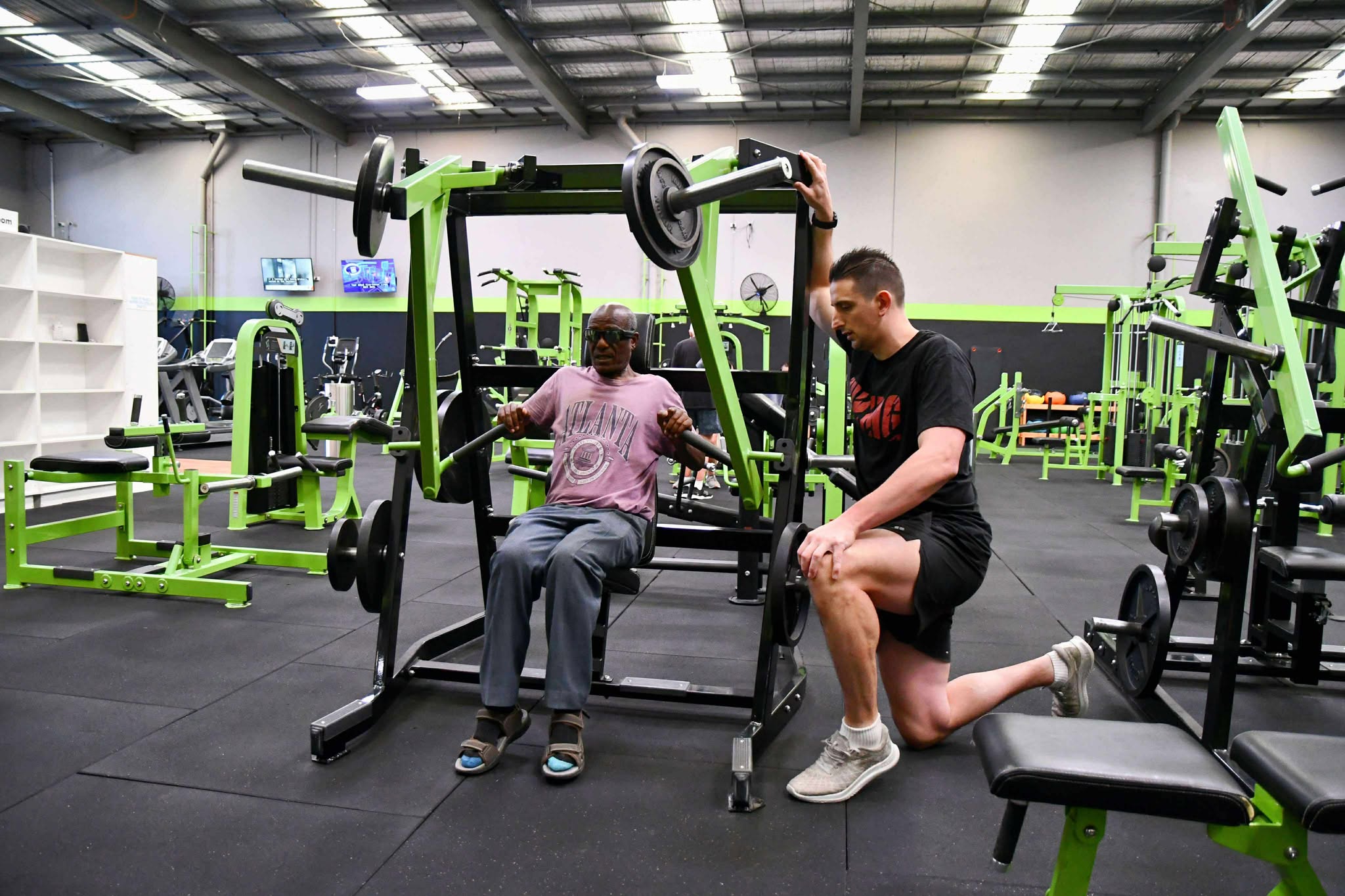When most people think about personal training, they picture someone demonstrating a movement visually, counting reps, maybe tweaking form by showing, not telling. But what happens when your client can’t see what you’re doing? When every rep, cue, and safety instruction has to be communicated in a completely different way?
That’s what I learned firsthand when I began training Steve and his wife, two blind clients who reached out through my Google business profile. I’d never coached anyone with visual impairment before, but Steve was confident, honest, and direct. He explained what support would help, and from day one, it became clear that this wasn’t going to be a barrier—it was going to be a massive learning curve that made me a better coach in every way.
This is what I’ve learned about communication, trust, progression, and coaching beyond what most trainers ever get to experience.
Starting with Curiosity, Not Certainty
By the end of that first session, I realized something important: great coaching doesn’t require a visual aid—it requires communication, respect, and a shared goal.
Descriptive Coaching and Predictable Structure.
The biggest adaptation in coaching blind clients has been language. I had to become far more descriptive—both in terms of environment and exercise execution. In a gym full of obstacles and people, safety becomes a priority, so I constantly use directional and spatial language like “Rotate toward the wall behind you,” or “Your left elbow should line up with your ribcage.”
In some situations, with consent, I use hand-over-hand guidance to help them feel the correct form. I also initially built workouts with predictable flow to reduce spatial confusion—but over time, as confidence grew, we shifted toward more variety, just like I would with any client.
Programming with Progress and Confidence in Mind
What made the biggest difference was routine and consistency. The more sessions we did, the more the exercises became part of their internal map. When I say “seated row,” they now connect that with feel, setup, and execution. They don’t need to see it. They know it. That’s a win.
Real-World Progress You Can Feel
One standout story is Steve’s journey from home-based workouts to full gym integration. When we started, we were training three times a week in his home with minimal equipment. Now, he’s training confidently in a commercial gym, learning new equipment, and becoming part of the gym community. At 60, Steve is thriving—building strength and loving the structure the gym brings to his routine.
How It Changed Me as a Coach
It also reminded me that coaching is not about showing off—it’s about connection, trust, and making someone feel safe and seen, even when they can’t see you.
When you coach someone who’s blind, you aren’t just teaching squats—you’re helping them feel confident, capable, and included. You’re helping them become part of a space they might not have felt they had access to before. You’re not just a trainer—you’re a bridge to a better life.

Training my Client, Admasu, who is clinically blind.



